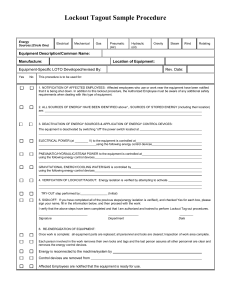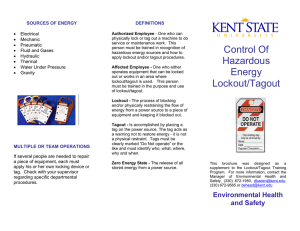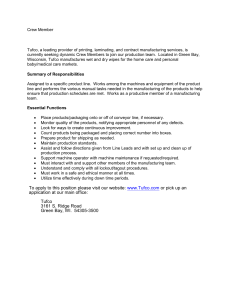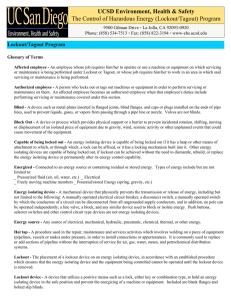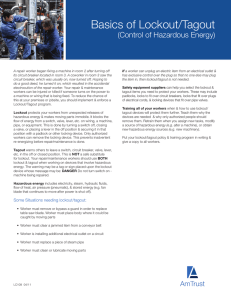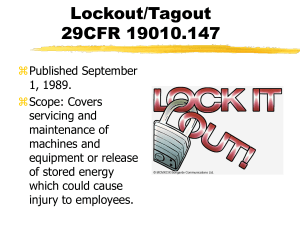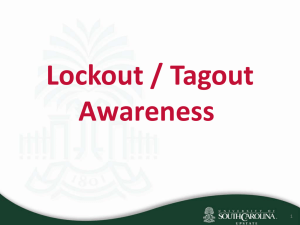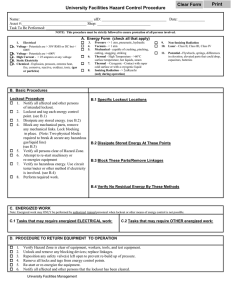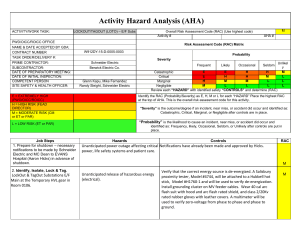1. A is a mechanical device that physically prevents the transmission
advertisement
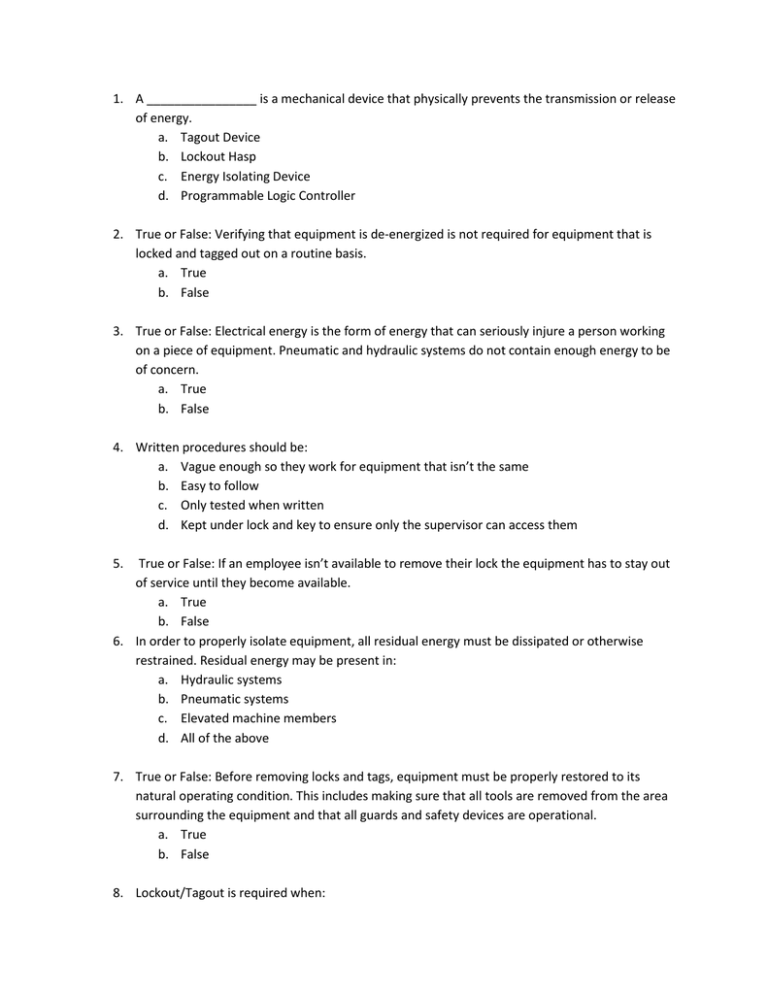
1. A ________________ is a mechanical device that physically prevents the transmission or release of energy. a. Tagout Device b. Lockout Hasp c. Energy Isolating Device d. Programmable Logic Controller 2. True or False: Verifying that equipment is de-energized is not required for equipment that is locked and tagged out on a routine basis. a. True b. False 3. True or False: Electrical energy is the form of energy that can seriously injure a person working on a piece of equipment. Pneumatic and hydraulic systems do not contain enough energy to be of concern. a. True b. False 4. Written procedures should be: a. Vague enough so they work for equipment that isn’t the same b. Easy to follow c. Only tested when written d. Kept under lock and key to ensure only the supervisor can access them 5. True or False: If an employee isn’t available to remove their lock the equipment has to stay out of service until they become available. a. True b. False 6. In order to properly isolate equipment, all residual energy must be dissipated or otherwise restrained. Residual energy may be present in: a. Hydraulic systems b. Pneumatic systems c. Elevated machine members d. All of the above 7. True or False: Before removing locks and tags, equipment must be properly restored to its natural operating condition. This includes making sure that all tools are removed from the area surrounding the equipment and that all guards and safety devices are operational. a. True b. False 8. Lockout/Tagout is required when: a. Removing or bypassing another safety device b. A worker places any part of their body into a danger zone that exists during the machine operation c. Performing servicing and maintenance on a piece of equipment or machine that could unexpectedly re-energize d. All of the above 9. True or False: Each lockout/tagout device must be removed from the energy isolating device by the employee who applied the device. If the person who applied the device is not available, notify your supervisor or manager. a. True b. False 10. Body harness and lanyards must be inspected to prior to and after use. When inspecting this equipment, always look for: a. Heat damage or burn marks b. Chemical damage to nylon webbing c. Distorted or damaged D-rings d. All of the above 11. True or False: Proper storage of fall arrest equipment is unimportant because the equipment is made to stand up to high heat, harsh chemicals and ultraviolet radiation. a. True b. False 12. A good fire prevention plan includes all of the following, EXCEPT: a. Fuel sources that could initiate or contribute to a fire b. Possible ways to contain fires to specific areas c. Any site-specific hazards d. Equipment that could be easily saved from the fire 13. OSHA guidelines recommend that fire extinguisher training be provided to ALL employees/ a. True b. False 14. It’s okay to run out of a building if it’s on fire. a. True b. False 15. Reducing, eliminating and organizing clutter can dramatically reduce the likelihood of a fire emergency. a. True b. False 16. Metal mesh gloves are designed to: a. Protect your hands from rough surfaces b. Be used around electricity c. Prevent cuts caused by sharp edges d. Provide protection from germs and bacteria 17. A bump cap provides adequate protection from falling objects. a. True b. False 18. When working in high heat environments, it’s recommended that you drill ventilation holes in your hard hat to reduce the risk of heat stress. a. True b. False 19. The majority of eye injuries typically occur amoung workers aged: a. 19 to 24 years b. 25 to 34 years c. 35 to 44 years d. 45 to 54 years 20. A face shield alone will provide adequate protection for your eyes and face. a. True b. False
